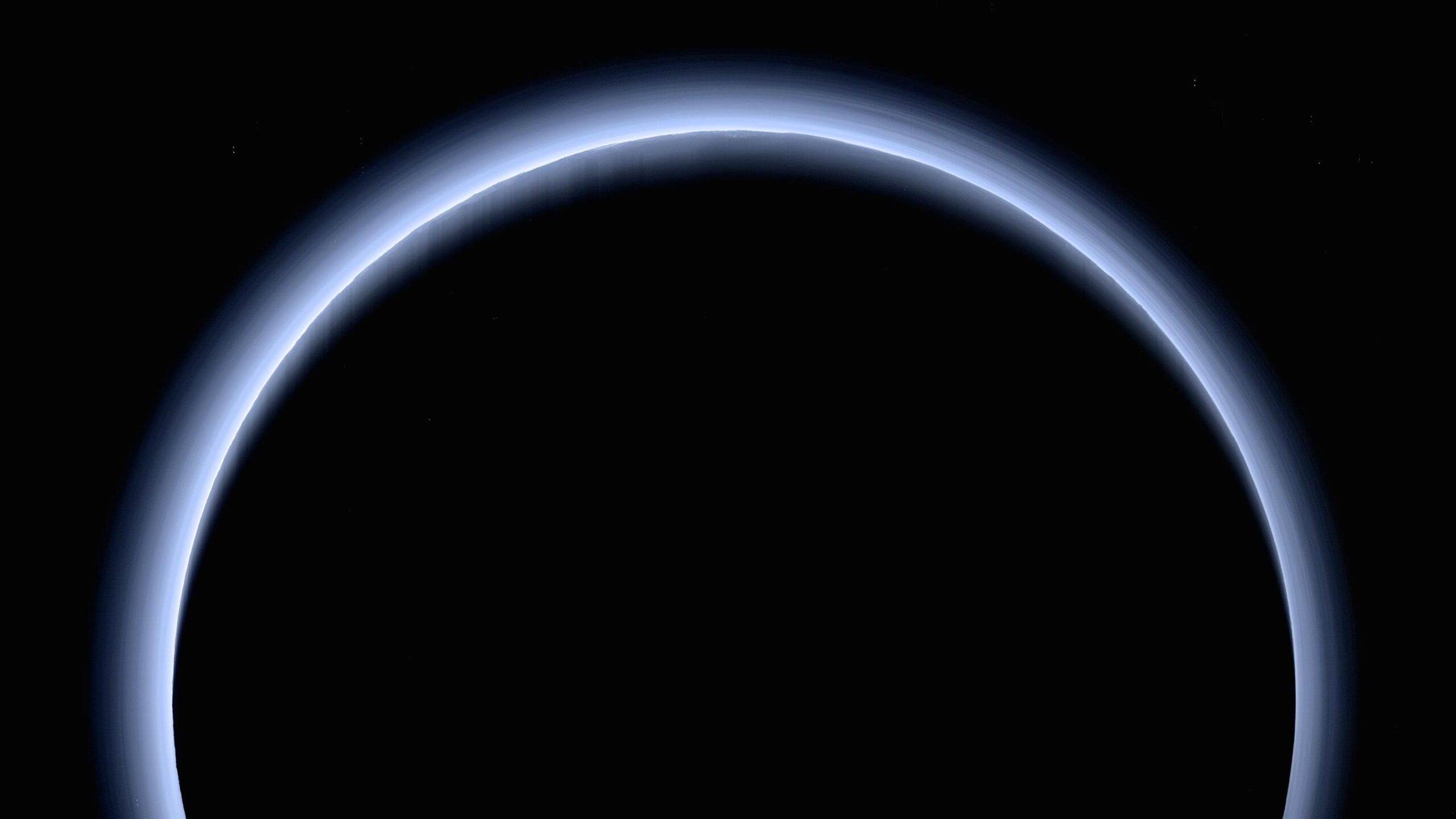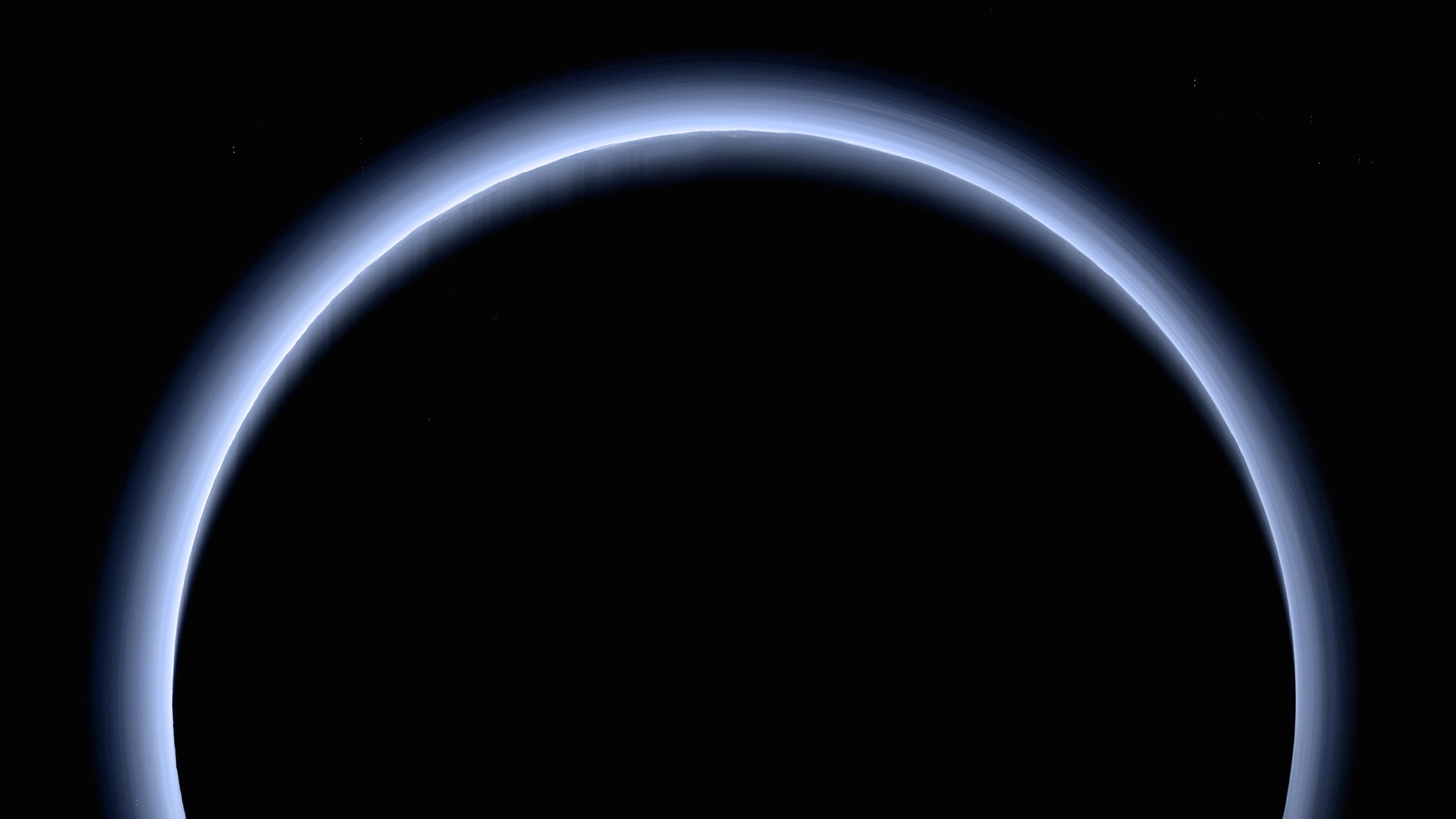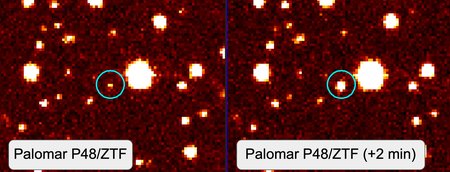Now Reading: Pluto’s hazy skies are making the dwarf planet even colder, James Webb Space Telescope finds
-
01
Pluto’s hazy skies are making the dwarf planet even colder, James Webb Space Telescope finds
Pluto’s hazy skies are making the dwarf planet even colder, James Webb Space Telescope finds

The James Webb Space Telescope (JWST) has discovered that a hazy sky over frozen Pluto is helping to cool the dwarf planet’s atmosphere, while at the same time giving methane and other organic molecules a kick out of Pluto’s atmosphere, where some are subsequently being gathered up by Pluto’s close companion, Charon.
The discovery of the haze was predicted back in 2017 by planetary scientist Xi Zhang of the University of California, Santa Cruz, to explain why Pluto‘s thin atmosphere is so leaky. Based on measurements from NASA’s New Horizons spacecraft, which hurtled past Pluto and Charon in 2015, planetary scientist Will Grundy at the Lowell Observatory in Arizona calculated that Pluto’s atmosphere is losing 1.3 kilograms (2.9 pounds) of methane to space every second, and about 2.5% of this methane is being intercepted by Charon, staining its poles red with organic chemistry. Nowhere else in the solar system do we see an atmosphere leaking onto a neighboring body.
The cause of this atmospheric escape was unknown, but Zhang reasoned that if Pluto’s atmosphere contained a layer of haze, then this haze would absorb what little extreme ultraviolet light from the distant sun reaches Pluto, providing the energy to give molecules the nudge they need to escape into space.
Besides the haze heating the atmospheric molecules so that they can escape, Zhang also realized that the haze could have a cooling effect on Pluto’s atmosphere — an effect that had previously been detected in Pluto’s mesosphere, which is the third layer of the atmosphere above the virtually non-existent troposphere and the denser stratosphere.
Pluto’s mesosphere is found between 20 kilometers and 40 kilometers (12.4 to 24.9 miles) high and reaches a maximum temperature of minus 163 degrees Celsius (110 Kelvin/minus 262 degrees Fahrenheit) before cooling at a rate of 0.2 degrees Celsius per kilometer, to a minimum of minus 203 degrees C (70 Kelvin/minus 334 degrees F).
The problem was that, until now, no haze had been detected on Pluto. Then along came the JWST.

Zhang had predicted that any atmospheric cooling spurred on by a layer of haze would result in thermal emission at mid-infrared wavelengths. Mid-infrared emission had been detected coming from the Pluto-Charon system before, going all the way back to Europe’s Infrared Space Observatory in 1997, NASA’s Spitzer Space Telescope in 2004, and Europe’s Herschel Space Observatory in 2012. However, on each occasion, the telescope lacked the resolution to distinguish between Pluto and Charon and determine where the emission was coming from. But JWST, with its 6.5-meter (21.4 feet) primary mirror and Mid-Infrared Instrument (MIRI), is able to distinguish between Pluto and Charon. So Zhang, as part of a team led by Tanguy Bertrand of the Observatoire de Paris, was able to use JWST to detect the thermal mid-infrared emission from the long-elusive haze.
“We use the term ‘haze’ to describe layers of solid aerosols suspended high in an atmosphere,” Bertrand told Space.com. “These aerosols scatter light and reduce visibility, forming a diffuse and semi-transparent layer.”
Pluto’s atmosphere is mostly nitrogen, with a smidgen of carbon dioxide and hydrocarbons such as methane, benzene, diacetylene and hydrogen cyanide. This atmosphere is exceptionally thin; the surface pressure is just 13 microbars, in comparison to Earth’s surface pressure of about 1 bar. (One bar is equivalent to one million microbars.) And because of Pluto’s low gravity, the upper atmosphere extends quite a long way from the surface, by several Pluto radii (the radius of Pluto is 1,188.3 kilometers, or 737 miles). All molecules need is a slight nudge to send them spinning out of the atmosphere, and the energy to give them that nudge comes from the sun.
“A significant fraction of the incoming solar extreme ultraviolet radiation is absorbed by the upper atmosphere, leading to heating that powers atmospheric mass loss,” said Bertrand. “Atmospheric gases such as nitrogen and methane are responsible for absorbing radiation at these wavelengths.”
But how can the haze alternatively cause both atmospheric heating and cooling?
“Cooling or heating depends on the haze properties, such as particle size, shape and composition — i.e., icy with hydrocarbon ice, or non-icy — which are not very well known,” said Bertrand. “We are currently investigating this with state-of-the-art microphysical [i.e., on the scale of atoms and molecules] models.”
The ability of the haze to cool or heat the atmosphere means that it therefore controls the balance of energy in Pluto’s atmosphere, affecting global temperatures, atmospheric circulation and what passes for climate on the frigid dwarf planet. This climate system is dominated by cycles of sublimation and freezing out of molecular nitrogen, methane, and carbon monoxide, much of which hails from the deep glacier in Sputnik Planitia, which is the heart-shaped feature on the dwarf planet’s surface.
RELATED STORIES
Zhang described for Space.com this energy balance in detail. “Based on New Horizon’s temperature observations from 2015, we found that gas heating significantly exceeds gas cooling,” he said. “So there is a net radiative heating of the atmosphere. To maintain energy balance under these conditions, the haze must provide the necessary net radiative cooling. But it remains unclear whether haze has a net cooling effect during other seasons, as Pluto’s seasons vary dramatically!”
Those “seasons” are so drastically different because of Pluto’s elongated orbit, which takes it from closer to the sun than Neptune to almost twice as far out. Even out here, in the depths of the solar system, this difference in distance markedly affects the amount of heating Pluto receives.
Pluto’s haze is similar to the hydrocarbon-rich haze found on Saturn‘s moon Titan. Both hazes result from the photochemistry of solar extreme ultraviolet light reacting with molecules such as nitrogen and methane. Even the early Earth, prior to the rise of an oxygen-enriched atmosphere over 2.4 billion years ago, may have harbored a haze of hydrocarbons in its atmosphere similar to Pluto, albeit much more dense. Understanding Pluto’s atmosphere could therefore potentially teach us something about our own planet’s beginnings.
The new study was published in the journal Nature Astronomy on June 2
Stay Informed With the Latest & Most Important News
Previous Post
Next Post
-
 012024 in Review: Highlights from NASA in Silicon Valley
012024 in Review: Highlights from NASA in Silicon Valley -
 02Panasonic Leica Summilux DG 15mm f/1.7 ASPH review
02Panasonic Leica Summilux DG 15mm f/1.7 ASPH review -
 03How New NASA, India Earth Satellite NISAR Will See Earth
03How New NASA, India Earth Satellite NISAR Will See Earth -
 04And Thus Begins A New Year For Life On Earth
04And Thus Begins A New Year For Life On Earth -
 05Astronomy Activation Ambassadors: A New Era
05Astronomy Activation Ambassadors: A New Era -
 06From Polymerization-Enabled Folding and Assembly to Chemical Evolution: Key Processes for Emergence of Functional Polymers in the Origin of Life
06From Polymerization-Enabled Folding and Assembly to Chemical Evolution: Key Processes for Emergence of Functional Polymers in the Origin of Life -
07SpaceX launch surge helps set new global launch record in 2024



















